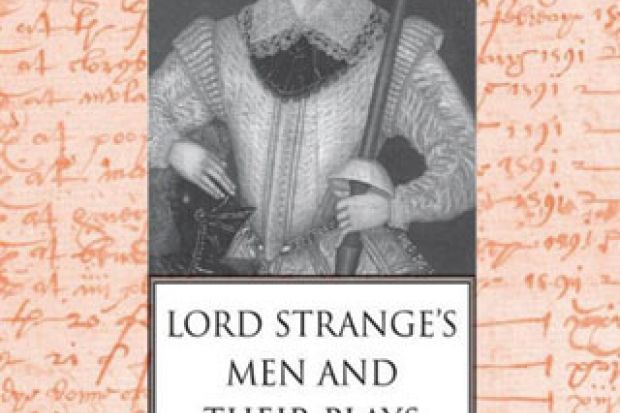Shakespeare’s canonical prominence has tended to augment the profile of the Chamberlain’s/King’s Men at the cost of other acting companies. Moreover, his attachment as writer-in-residence to this single troupe serves to occlude the extent to which, as Lawrence Manley and Sally-Beth MacLean assert, the circumstances surrounding such companies were in flux in the early 1590s. In many ways, Shakespeare is the exception rather than the rule, and the stability associated with his middle and later career wholly atypical. As Manley and MacLean insist in this assiduous book, “1589-93 was marked by exceptional fluidity and volatility (as well as artistic ferment) in the theatrical profession”.
For all their uncertainties (at one point while trying to trace the travels of Lord Strange’s Men on tour, they talk of “the frustrations of itinerary compilation”), the authors provide a compelling account of one of the most significant formative companies. At the heart of their project is the repertory: “Associated with the ambitious roster of plays belonging to Strange’s Men are the names of nearly all the emerging playwrights of the time: Robert Greene, Thomas Kyd, Thomas Lodge, Christopher Marlowe, Thomas Nashe, George Peele.” In addition, Manley and MacLean argue for the inclusion of plays by Henry Chettle, Anthony Munday and Shakespeare. Fortunately, the diary kept by Philip Henslowe, the proprietor of the Bankside theatre The Rose, is able to assist them here, although not without ambiguities and omissions. The arguments in favour of the inclusion of Sir Thomas More and I Henry VI, for instance, rely on hypotheses. Manley and MacLean date the former play nearly a decade earlier than its latest editor, John Jowett, whose proposal of 1600 post-dates the dissolution of the company by seven years, and they assume that Shakespeare authored rather than revised the latter.
The authors remain modestly undogmatic, despite the weight of the archival work they present: “The evidence with which we are working is incomplete, recalcitrant, and sometimes contradictory.” In spite of this, Lord Strange’s Men and Their Plays is full of penetrating suggestions. The authors point out that at the end of January 1593 there was a “six-day sequence of performances” (including Marlowe’s Massacre at Paris and a revival of The Jew of Malta) that concentrated thematically on religious wars. This allows them further to propose that the company was concerned to develop “a conscientious and penetrating critique of the political and religious problems of late Elizabethan England” and demonstrates how the programme may have been responding to topical cultural issues rather than merely fulfilling box-office demands.
Not only were the playwrights hawking their wares between various companies (and, in this, Shakespeare, in the early days, may have been no exception), but the performers too were willing to forgo fidelity to any one company if the money was right. Edward Alleyn, the star of the Admiral’s Men, was touring with Strange’s Men in the early 1590s and troupes of actors would occasionally fragment and reorganise under new patrons: “the core talent of Strange’s Men” eventually became the Chamberlain’s Men.
The rapidly shifting repertory exerted huge demands on the players; in less than a year, Alleyn “had to recall or learn at least twenty-nine major roles, many of them hundreds of lines long” – a pressure today’s stars would find overwhelming. This is a thorough and important book for those interested in the pioneering years of the commercial theatre.
Lord Strange’s Men and Their Plays
By Lawrence Manley and Sally-Beth MacLean
Yale University Press, 480pp, £35.00
ISBN 9780300191998
Published 3 July 2014
Register to continue
Why register?
- Registration is free and only takes a moment
- Once registered, you can read 3 articles a month
- Sign up for our newsletter
Subscribe
Or subscribe for unlimited access to:
- Unlimited access to news, views, insights & reviews
- Digital editions
- Digital access to THE’s university and college rankings analysis
Already registered or a current subscriber?





